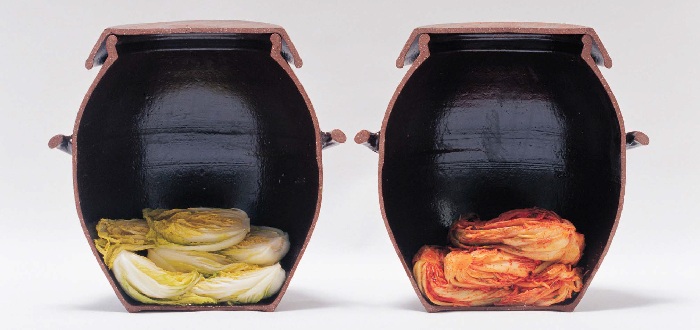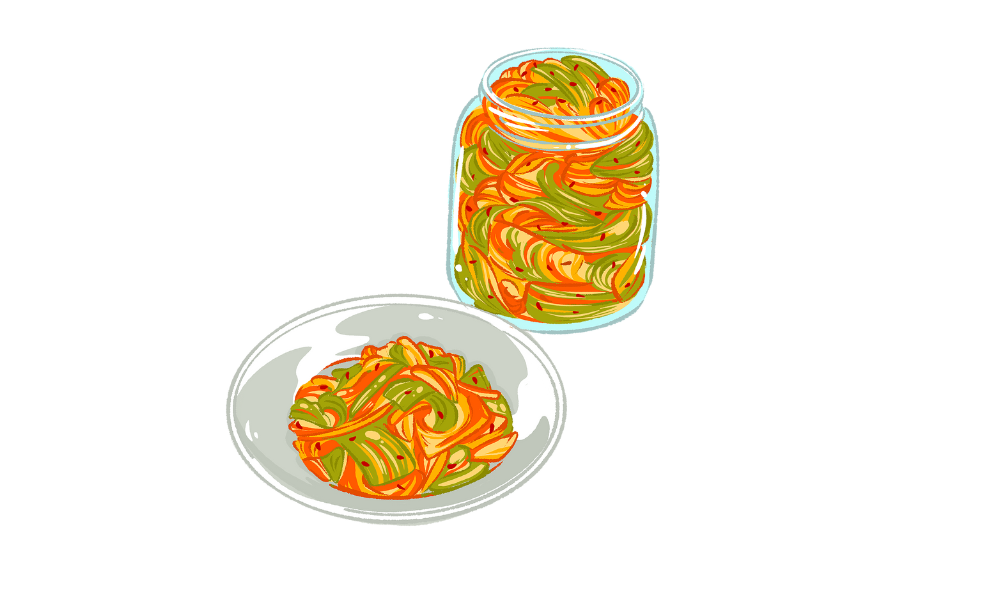Kimchi, a staple in Korean cuisine, has gained worldwide popularity for its unique taste and numerous health benefits. A fermented dish made of vegetables and spices, kimchi can be stored in various ways, leaving many to wonder: does kimchi have to be refrigerated?
In this article, we’ll explore the ins and outs of kimchi storage and answer this question.

Understanding Kimchi
Origins and history
Picture yourself traveling back in time to the early days of Korea, where the origins of kimchi can be traced. This beloved dish has been an integral part of Korean culture for centuries, with its roots dating as far back as 37 BCE to 7 CE.
Over time, kimchi has evolved and adapted to various influences, creating a rich tapestry of flavors and techniques that define its storied past.
Ingredients and variations

As you explore the diverse world of kimchi, you’ll discover that there are numerous ingredients and variations that make each version unique. At its core, kimchi consists of vegetables like napa cabbage and radish, combined with a blend of spices such as red chili pepper flakes, garlic, ginger, and fish sauce. With over 200 known varieties, kimchi can be found in countless forms, influenced by regional and seasonal differences in ingredients and preparation methods.
The fermentation process

The magic of kimchi lies in its fermentation process, which transforms simple ingredients into a flavorful and nutritious masterpiece. As lactic acid bacteria and other microorganisms break down the carbohydrates in the vegetables, they produce lactic acid, carbon dioxide, and various compounds that contribute to kimchi’s unique taste.
This process not only enhances the dish’s flavor profile but also improves its nutritional content and digestibility, making kimchi a celebrated staple in Korean cuisine.
Does Kimchi Have to Be Refrigerated?
In short, yes, kimchi should be refrigerated after opening to ensure its freshness, taste, and quality. Refrigeration also helps slow down the fermentation process, extending the shelf life of the kimchi. However, before opening, kimchi can be stored at room temperature.
Traditional Korean storage methods

Traditionally, Koreans stored kimchi in earthenware pots called onggi, buried underground to maintain a consistent temperature and humidity. This method allowed for slow fermentation while protecting the kimchi from spoilage.
Modern refrigeration techniques
Today, many people store kimchi in refrigerators, which slows down the fermentation process and prolongs shelf life. Some even use specialized kimchi refrigerators to replicate traditional storage conditions.
Pros and cons of refrigeration
Refrigerating kimchi has both advantages and disadvantages. On one hand, it preserves kimchi for longer periods, reduces the risk of spoilage, and maintains a consistent flavor profile. On the other hand, refrigeration can slow fermentation, potentially hindering the development of complex flavors.
The Impact of Storage on Flavor and Fermentation

Effects on taste and texture
Storage conditions greatly affect kimchi’s taste and texture. Refrigerated kimchi may have a crunchier texture and milder flavor, while room temperature storage can result in softer, more pungent kimchi.
Rate of fermentation
Fermentation occurs more rapidly at room temperature, allowing for the development of complex flavors. In contrast, refrigeration slows fermentation, maintaining a more consistent flavor profile over time.
Microbial activity
Microbial activity is critical to kimchi fermentation, and storage conditions can impact the balance and growth of these microorganisms. Room temperature storage may encourage a broader range of bacterial species, while refrigeration may limit their growth and diversity.
Safe and Proper Storage Guidelines

Storing freshly made kimchi
When storing freshly made kimchi, ensure that it is sealed in an airtight container to prevent contamination and gas buildup. Press down on the vegetables to submerge them in their own liquid, which helps create an anaerobic environment for fermentation.
Prolonging shelf life
To prolong the shelf life of kimchi, store it in the refrigerator, away from direct sunlight and strong-smelling foods. Regularly check the container for gas buildup and release it if needed.
Signs of spoilage
Spoiled kimchi may exhibit a sour or rancid odor, slimy texture, or mold growth. If any of these signs are present, discard the kimchi immediately.
Conclusion
Key takeaways
Determining whether kimchi needs to be refrigerated depends on personal preference and desired fermentation levels. Refrigeration can prolong shelf life and maintain a consistent flavor, while room temperature storage may result in more complex flavors and faster fermentation. Ultimately, proper storage conditions are crucial to preserving kimchi’s taste, texture, and nutritional benefits.
Experimenting with your kimchi storage
Don’t be afraid to experiment with different storage methods, temperatures, and fermentation times to find your ideal kimchi. By understanding the impact of storage conditions on flavor and fermentation, you can create kimchi that suits your personal taste preferences.
Embracing the diversity of kimchi flavors
Kimchi’s diverse range of flavors and textures is a testament to its cultural and culinary significance. By exploring various storage methods and fermentation levels, you can fully appreciate the rich history and complex flavors of this iconic Korean dish. So, whether you choose to refrigerate your kimchi or store it at room temperature, embrace the journey of discovering the perfect kimchi for you.
FAQs
Can kimchi be frozen?
While it is possible to freeze kimchi, doing so can alter its texture and disrupt the fermentation process. If you choose to freeze kimchi, allow it to thaw slowly in the refrigerator before consuming.
How long does kimchi last?
The shelf life of kimchi varies depending on the storage method and conditions. When stored properly in a refrigerator, kimchi can last for several months, while room temperature storage typically results in a shorter shelf life of several weeks to a month.
Is it safe to eat over-fermented kimchi?
Over-fermented kimchi is generally safe to eat, but it may have an extremely sour taste. If you find it too sour, consider using it in cooked dishes like kimchi fried rice or kimchi stew.
What is the ideal temperature for kimchi fermentation?
The ideal temperature for kimchi fermentation ranges from 34°F-39°F (1°C-4°C) for refrigerated storage and 60°F-70°F (15°C-21°C) for room temperature storage. These temperatures promote optimal microbial activity and minimize the risk of spoilage.








